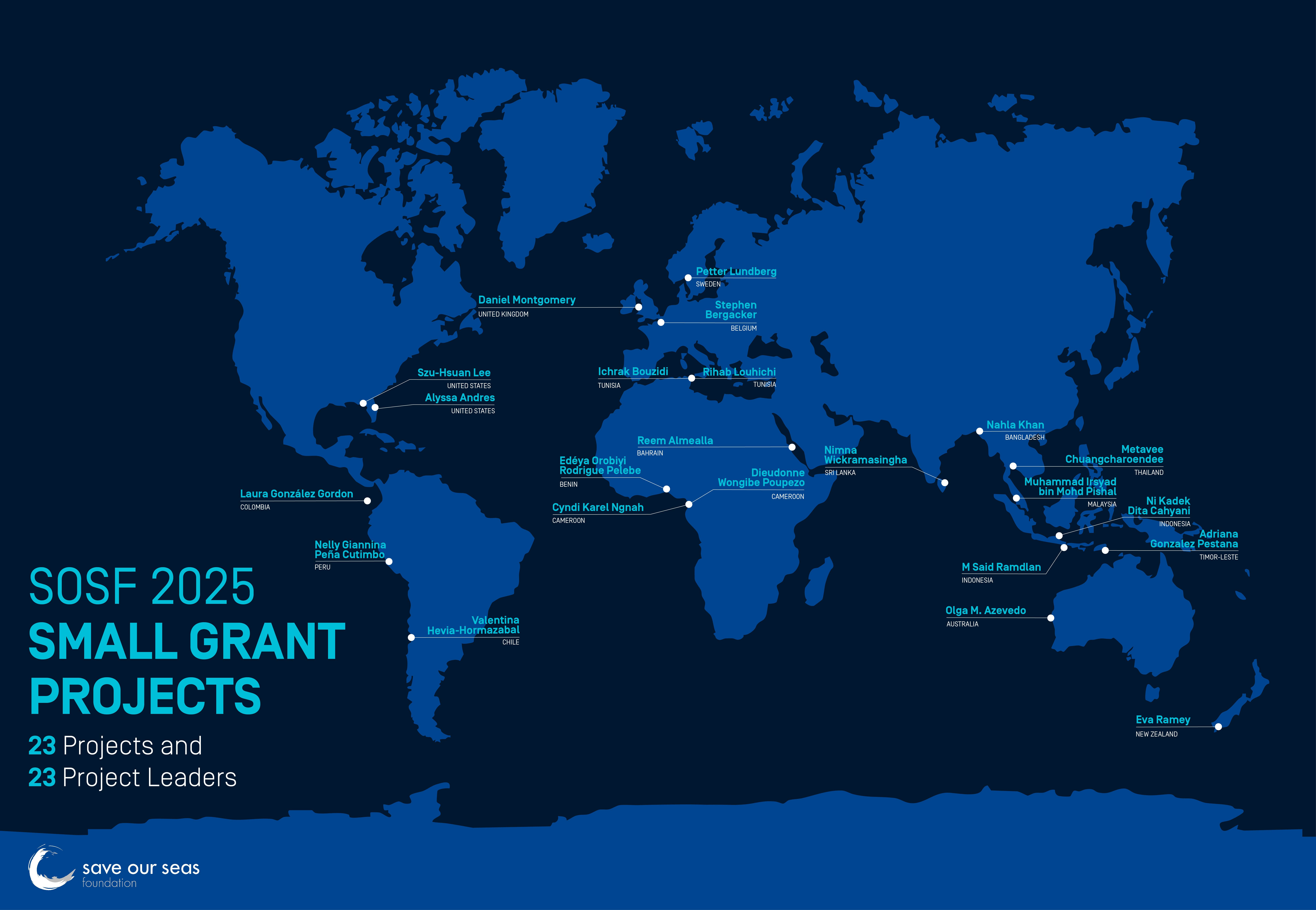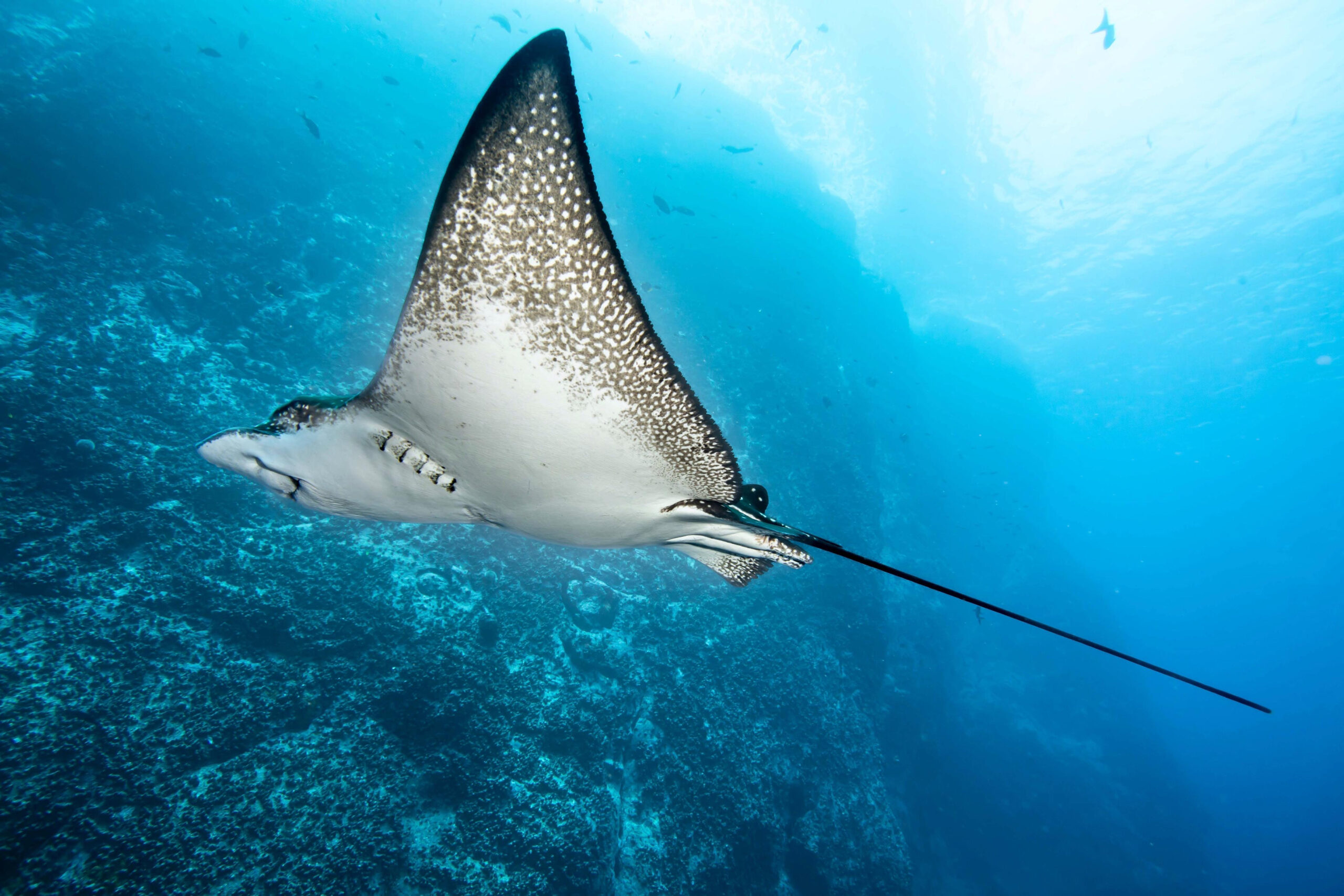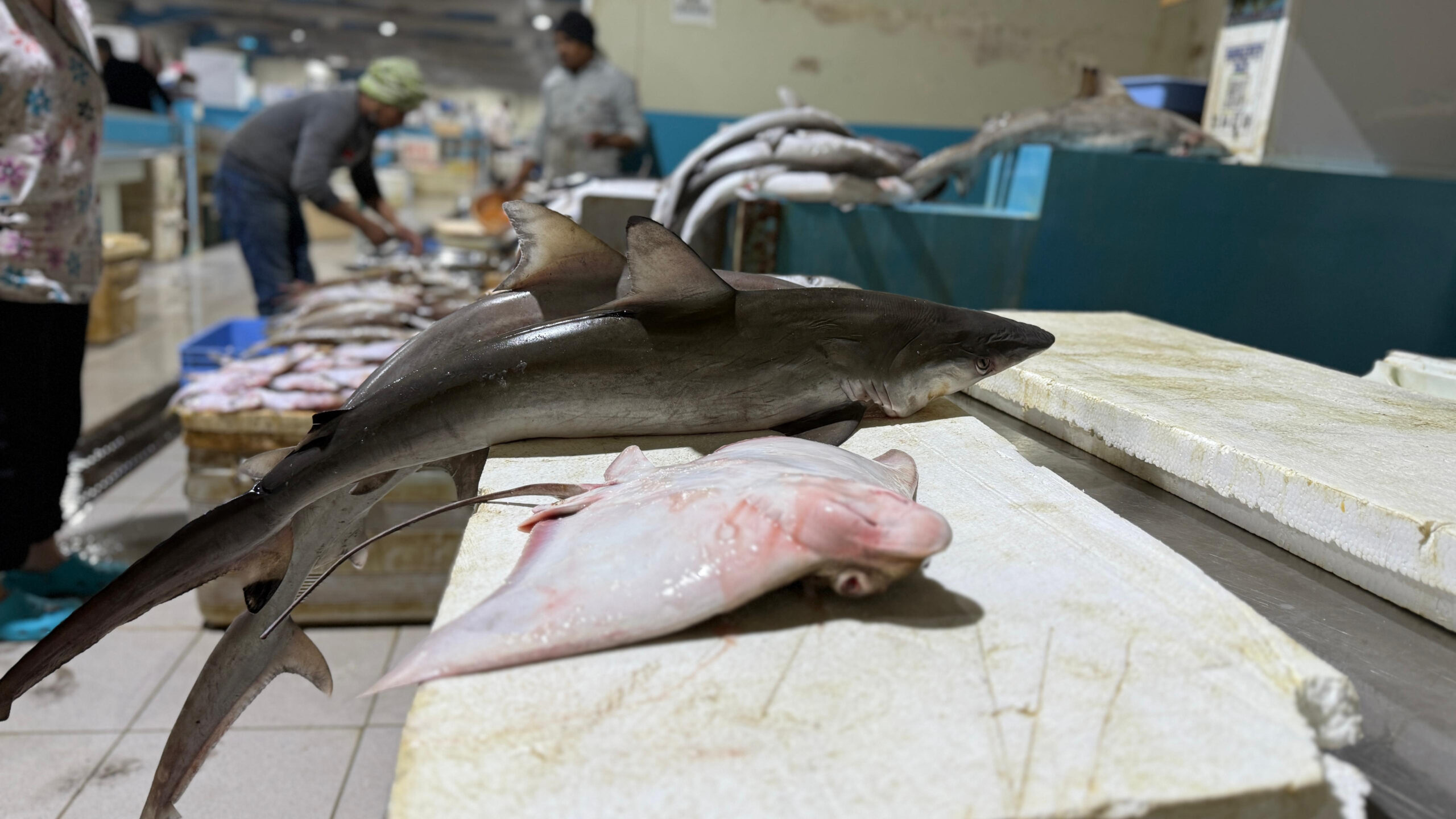Tenacity can create a tidal wave of change: meet our 2025 Small Grant project leaders
We are thrilled to introduce a new generation of future-focused scientists, conservationists and educators around our planet. The 21 recipients of our Small Grants for this year are tackling complex questions about our changing world, and it’s their determination to shape the sustainability of our shared future that has us holding onto hope.
Hope takes work; to find it, you need to have grit and be in it for the long haul.
South Africa’s indomitable Archbishop Desmond Tutu understood the tenacity it takes to effect change and stay hopeful through it all. ‘Do your little bit of good where you are,’ he said. ‘It is those little bits of good put together that overwhelm the world.’ In the global network of our new project leaders, we at the Save Our Seas Foundation are more hopeful than ever that we have a fighting chance for a just and sustainable future.
There are young scientists embarking on their PhD projects and early-career researchers carving out their own place in the conservation sector. And in our age of information (and even potentially greater misinformation), we’re proud to be announcing projects in many places that are almost totally devoid of previous documentation. From Tunisia to Bahrain to Timor-Leste, our project leaders embody an exciting development in the shark conservation field; rather than following a dwindling career path, young and impassioned people are taking charge of change in their own nations. Many of them face enormous obstacles, and we’re honoured to support them as they tackle challenges head on.

Adriana is one of the first to be documenting the diversity and occurrence of sharks, rays and chimaeras in Timor-Leste’s almost totally undocumented waters. She is working with local communities to identify critical habitats for breeding, feeding and aggregating chondrichthyans.
Alyssa is investigating whether bull sharks, with their capacity to move between marine and freshwater ecosystems, might find a thermal refuge in Florida’s natural springs systems. She is investigating whether bull sharks might have a stable nursery option in King’s Bay and Crystal River – and is working to characterise and protect their potential climate haven.
Inspiration and entertainment underscore Cyndi’s fresh take on conservation education for children in Cameroon. She is creating and distributing culturally relevant cartoon animations to inspire young Cameroonians to act to save sharks and rays.
Fishing is the primary livelihood for many coastal Cameroonian communities; fisheries bring economic stability and food security. But the endangered status of many species threatens the sustainability and security of coastal livelihoods. Wongibe is on a mission to reduce scalloped hammerhead shark bycatch in targeted fishing areas by 20%.
Wongibe has set out to identify and map bycatch hotspots, decipher the age structure of scalloped hammerhead populations by analysing fin samples, and investigate the levels of metals and pollutants in the sharks’ tissues. Photo © Dieudonne Wongibe
Tope sharks in the north-eastern Atlantic Ocean are Critically Endangered, but we know little about where they mate and pup. Daniel wants to understand how tope sharks are using the Pen Llŷna’r Sarnau Special Area of Conservation in Wales.
By documenting catch data at the Cotonou Artisanal Fishing Harbour, mapping the market chain for this endangered species and training fishermen in safe shark-release protocols, Edéya will pioneer improvement in fisheries practices for sharks in Benin.
In one of the world’s most remote wildernesses, Eva is trying to understand how sharks use marine reserves (no-take areas). She wants to become better informed about how to protect them from human impacts such as coastal development and fishing.
Shortfin mako sharks are one of the most sought-after species in the Mediterranean. They are Critically Endangered in the region, thanks to the demand for their valuable fins and meat. Ichrak is mapping where and when shortfin makos move around Tunisia’s Gulf of Hammamet.
The Pacific spotted eagle-ray is genetically unique to the Eastern Tropical Pacific. Laura is working to characterise the genetic diversity and population structure of populations of this eagle-ray around Colombia’s Malpelo Island.

Laura's project marks a first for Colombia, and she wants to understand the rays protected in the Malpelo Marine Protected Area as well as their genetic ties to other populations around the Eastern Tropical Pacific. Photo © Sandra Bessudo | Fundacion Malpelo y Otros Ecosistemas Marinos
Trade-offs are top of M Said’s mind as he navigates the need for shark conservation to be balanced with improving the well-being of Sumbawa’s coastal communities. He is focusing on communities in Lunkyuk, an understudied region in Indonesia and a nursery ground for Critically Endangered hammerheads and wedgefish.
Thailand has few experts in shark telemetry and this lack of expertise, combined with public opposition to tagging, makes it difficult to conduct shark conservation research. Metavee wants to rebuild public trust by having expert telemetry training for government agencies, marine veterinarians and university lecturers.
New rhino ray species have recently been discovered in the Malacca Strait, one of the world’s busiest shipping lanes, which suggests greater diversity of these endangered shark-like rays than previously thought. Muhammad is supporting accurate assessments of the status of endangered rhino rays, clarifying their distribution, gathering information about their biology and reproduction and deciphering their genetics.
Nelly is gathering preliminary information about the age and growth of the Chilean eagle ray to guide its fishery management. She wants to establish a baseline for determining the minimum catch size, which is what is needed to help manage its mortality in Peruvian fisheries.
In the Humboldt Current System off Peru’s coast, the abundance of the Chilean eagle ray is high. It is endemic to this system, but is under huge fishing pressure as the most landed ray species in Peru. She will train artisanal fishers of Pucusana to promote the sustainable fishing of sharks and rays, emphasising the Chilean eagle ray. Photo © Nelly Myl
Ni is studying paternity patterns of bottlenose wedgefish within Indonesia’s Karimunjawa National Park. Knowing whether these wedgefish are monogamous or polygamous is essential for effective population management, where maintaining genetic diversity is key to avoiding genetic bottlenecks.
Sri Lanka is one of the world’s largest shark-fishing nations, and most of the shark and ray species landed in Batticaloa are at risk of extinction. Nimna is hoping to test the efficacy of eDNA sampling to make more comprehensive inventories of biodiversity to monitor sharks and rays and complement the existing visual surveys at these large and busy landing sites.
Olga is exploring trophic connections between tiger sharks and turtles, dugongs and other potential prey to aid the conservation of Shark Bay (Gathaagudu), an Australian UNESCO World Heritage Site that supports endangered marine megafauna.
The Northwest Atlantic spiny dogfish has returned to Swedish waters after reaching near collapse. When fishing quotas reopened in 2023, some gaps in ecological knowledge became obvious. Petter is intent on closing these by improving understanding of spiny dogfish movements, their temporal aggregations and where they are most vulnerable to commercial and recreational fishing.
Almost nothing is known about shark populations in Bahrain and Reem is on a mission to learn about elasmobranch communities: their distribution, species composition, seasonality and potential nursery areas. She’s doing so by using eDNA to fill in any gaps left by planned baited remote underwater video system (BRUVs) and fish market surveys.

Reem hopes to use her project to unite a range of stakeholders, as it is part of a wider project that involves local communities through citizen science. The aim is to create a platform that provides infrastructure and capacity for shark conservation, a first for Bahrain. Photo © Reem AlMealla
Rihab is using baited remote underwater video system (BRUVs) surveys to gather data on critical habitats and confirm aggregation areas for sharks and rays in Tunisia’s Gulf of Gabès.
To work out exactly how many species of spotted eagle ray are in our oceans, Stephen is collecting DNA from across their distribution to identify different species and understand how populations are connected or fragmented.
Szu is diving deep into the DNA of white sharks, hoping to capture the first clear images of their chromosomes and sex chromosomes. Part of his aim is to develop research methodology that will be minimally invasive for these animals.
Valentina is hoping to help improve the survival chances of unborn shark and ray embryos that wash ashore in mass egg-case strandings. She will be caring for stranded eggs as a conservation measure and establishing methodologies to replicate this practice in other breeding areas.
